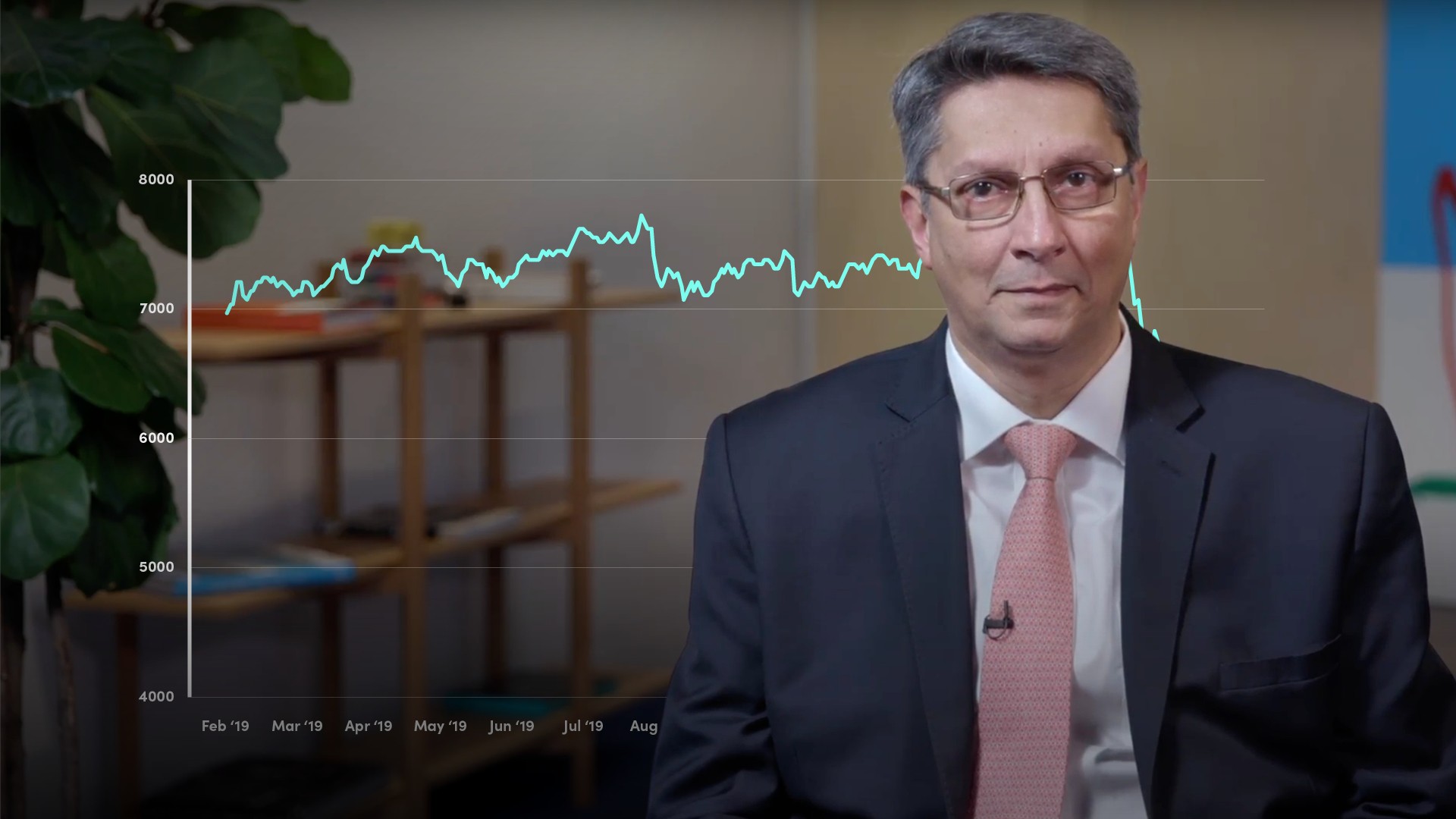
Portfolio Volatility

Abdulla Javeri
30 years: Financial markets trader
In this video, Abdulla outlines the importance of monitoring portfolio volatility risk and the way it is calculated for a two asset portfolio, and a three stock portfolio.
In this video, Abdulla outlines the importance of monitoring portfolio volatility risk and the way it is calculated for a two asset portfolio, and a three stock portfolio.
Subscribe to watch
Access this and all of the content on our platform by signing up for a 7-day free trial.

Portfolio Volatility
5 mins 39 secs
Volatilities and correlations are not static, they can change, sometimes very suddenly, therefore the risk in a portfolio can change over time, or sometimes very suddenly. It’s a case of constantly monitoring the risks, even perhaps trying to anticipate those changes in advance and making appropriate adjustments.
Key learning objectives:
Learn to calculate the volatility of a two asset portfolio
Outline the formula used for a three stock portfolio
Outline the uses of portfolio volatility in risk management
Subscribe to watch
Access this and all of the content on our platform by signing up for a 7-day free trial.
What is volatility?
Volatility is usually described as one standard deviation of annual percentage price movements and is a measure of risk, the higher the volatility, the higher the risk.Why is there a trade-off between risk and return?
- Holding high risk assets provides the potential for greater returns, but we also have to accept a risk of potentially large losses.
- If we were risk averse, we would invest in assets that have low risk, in other words, those less volatile. However, in this case, we’re unlikely to make large returns.
How can we calculate the volatility of a two asset portfolio?

This formula involves three key components:
- The volatility of each individual asset
- The weights of the assets as a proportion of the portfolio value
- The correlations between the assets
Using the information provided in the table below, what are the relevant volatilities?
| Stock | Holding | Price | Value | Weight | Volatility | Correlation |
| A | 1000 | 100 | 100,000 | 50% | 35% | 1.00 |
| B | 1000 | 100 | 100,000 | 50% | 35% |
- Portfolio Value = 200,000
- Average Volatility = 35%
- Weighted Volatility = 35%
- Portfolio Volatility = 35%
What would happen if the two stocks had a perfectly negative correlation (-1)?
If one goes up, the other comes down by exactly the same amount. Using our existing numbers, the value of the portfolio would remain unchanged, as a price of one would be offset by the change of the other. In other words, the portfolio volatility would be zero - 0%.What could we do If we wanted to reduce the volatility of a portfolio?
- Introduce a less volatile stock, change the volatility for stock a to say, 20%
- Increase the weight of stock A
- If we could find uncorrelated, or negatively correlated stocks, we could reduce it further
What is the effect on the portfolio volatility if the volatility for stock A was reduced to 20%?
| Stock | Holding | Price | Value | Weight | Volatility | Correlation |
| A | 1000 | 100 | 100,000 | 50% | 20% | 1.00 |
| B | 1000 | 100 | 100,000 | 50% | 35% |
- Portfolio Value = 200,000
- Average Volatility = 27.50%
- Weighted Volatility = 27.50%
- Portfolio Volatility = 27.50%
What is the effect on the relevant volatilities if the weight of stock A was increased to 1500?
| Stock | Holding | Price | Value | Weight | Volatility | Correlation |
| A | 1500 | 100 | 150,000 | 60% | 20% | 1.00 |
| B | 1000 | 100 | 100,000 | 40% | 35% |
- Portfolio Value = 250,000
- Average Volatility = 27.50%
- Weighted Volatility = 26.00%
- Portfolio Volatility = 26.00%
What is the effect on the relevant volatilities if the correlation was 0?
| Stock | Holding | Price | Value | Weight | Volatility | Correlation |
| A | 1500 | 100 | 150,000 | 75% | 20% | 0 |
| B | 500 | 100 | 50,000 | 25% | 35% |
- Portfolio Value = 200,000
- Average Volatility = 27.50%
- Weighted Volatility = 23.75%
- Portfolio Volatility = 17.37%
What is the effect on the relevant volatilities if the correlation was -0.7?
| Stock | Holding | Price | Value | Weight | Volatility | Correlation |
| A | 1500 | 100 | 150,000 | 75% | 20% | -0.7 |
| B | 500 | 100 | 50,000 | 25% | 35% |
- Portfolio Value = 200,000
- Average Volatility = 27.50%
- Weighted Volatility = 23.75%
- Portfolio Volatility = 10.85%
What is the formula used for a three stock portfolio?

What are the uses of portfolio volatility in risk management?
- The amount of risk associated with asset holdings can be calculated as a whole
- It can reduce the amount of capital that needs to be held against potential losses in the value of those assets.
Subscribe to watch
Access this and all of the content on our platform by signing up for a 7-day free trial.

Abdulla Javeri
There are no available videos from "Abdulla Javeri"






















